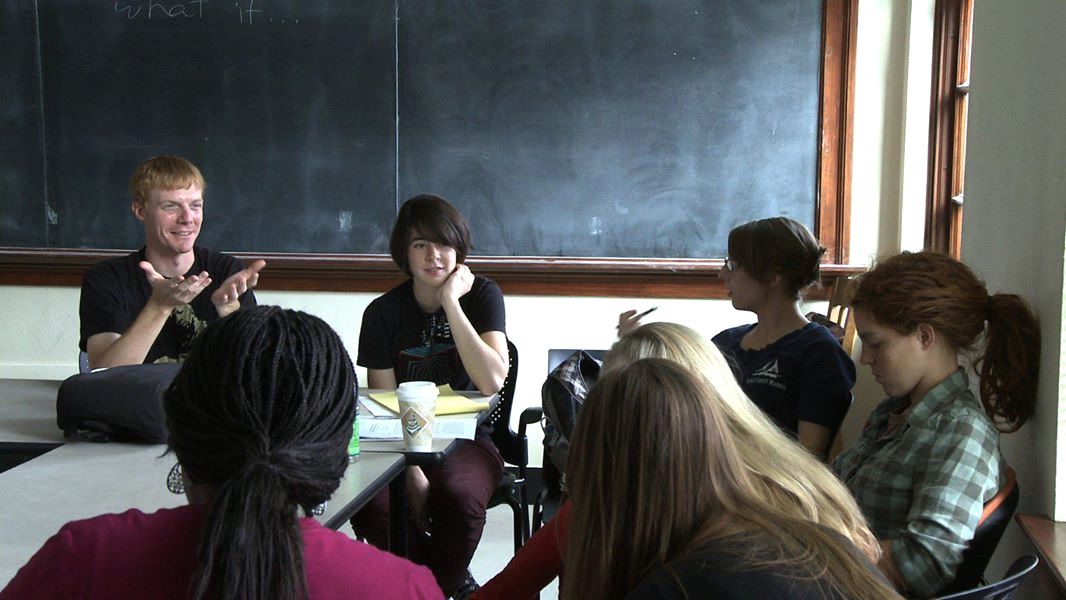The densely populated spaces of our built environment have been slowly redefining themselves. In 1981 there were the nine nations of North America. In 1991 the edge cities emerged. In 2001 we witnessed the worst intentions of a tightly networked community that lacked physical borders, what Richard Norton calls a “feral city.” From flash mobs to terrorist cells, communities can now quickly toggle between virtual and physical organization.

The city, as a form of the body politic, responds to new pressures and irritations by resourceful new extensions always in the effort to exert staying power, constancy, equilibrium, and homeostasis.
— Marshall McLuhan, Understanding Media
 According to Joel Garreau (1991), an edge city is one that is “perceived by the population as one place” (p. 7), which, like neighborhoods, are staunchly identified with and defended by their residents, resisting outside influence. Conversely, one of the key insights in Richard Florida’s latest book, The Great Reset (Harper, 2010) is that rapid transit increases the exchange of ideas between such areas, thereby spurring innovation (Where the car used to provide this mass connection, it now hinders it). Deleuze called these areas “any-space-whatever,” but the space in his view is only important for the connections it facilitates. Adam Greenfeld (2013) writes that “the important linkages aren’t physical but those made between ideas, technical systems and practices.” After all, the first condition for a smart city is “a world-class broadband infrastructure” (Townsend, 2013, p.194). Connection is key.
According to Joel Garreau (1991), an edge city is one that is “perceived by the population as one place” (p. 7), which, like neighborhoods, are staunchly identified with and defended by their residents, resisting outside influence. Conversely, one of the key insights in Richard Florida’s latest book, The Great Reset (Harper, 2010) is that rapid transit increases the exchange of ideas between such areas, thereby spurring innovation (Where the car used to provide this mass connection, it now hinders it). Deleuze called these areas “any-space-whatever,” but the space in his view is only important for the connections it facilitates. Adam Greenfeld (2013) writes that “the important linkages aren’t physical but those made between ideas, technical systems and practices.” After all, the first condition for a smart city is “a world-class broadband infrastructure” (Townsend, 2013, p.194). Connection is key.
Urban planner Kevin Lynch (1976) writes, “Our senses are local, while our experience is regional” (p. 10). In Great American City (University of Chicago Press, 2013), Robert J. Sampson argues for behavior based on our sense of local roots. The neighborhood effect is sort of a structuration between the individual and the network, the local and the global (cf. Giddens, 1984). The neighborhood is where the boundaries matter. It’s where human perception binds us within borders, where nodes are landmarks in a physical network, not connections in the cloud.
There are patterns because we try to find them. A desperate attempt at order because we can’t face the terror that it might be all random. — Lauren Beukes, The Shining Girls
 Lynch called cities, “systems of access that pass through mosaics of territory” (1976, p. 21). In Out of the Mountains (Oxford University Press, 2013), David Kilcullen defines four global factors determining the future of such mosaics of territory: population growth, urbanization, littoralization, and connectedness. As more and more people copulate and populate the planet, they are doing so in bigger cities, near the water, and with more connectivity than ever. Basically the future of human hives is crowded, coastal, connected, and complex.
Lynch called cities, “systems of access that pass through mosaics of territory” (1976, p. 21). In Out of the Mountains (Oxford University Press, 2013), David Kilcullen defines four global factors determining the future of such mosaics of territory: population growth, urbanization, littoralization, and connectedness. As more and more people copulate and populate the planet, they are doing so in bigger cities, near the water, and with more connectivity than ever. Basically the future of human hives is crowded, coastal, connected, and complex.
Today, we are witnessing the rise of swarm publics, highly unstable constellations of temporary alliances that resemble a public sphere in constant flux; globally mediated flash mobs that never meet, fuelled by sentiment and affect, escaping fixed capture.
— Eric Kluitenberg, Delusive Spaces
These “swarm cities,” as I call them, are only as physical as they need to be. And, as connected as they are, are also only as cohesive as they need to be. But the networked freedom to live and work anywhere doesn’t always make the neighborhood irrelevant, it often makes it that much more important.
References:
Beukes, Lauren. (2013). The Shining Girls: A Novel. New York: Mulholland Books, p. 324.
Florida, Richard. (2010). The Great Reset. New York: Harper.
Garreau, Joel. (1981). The Nine Nations of North America. New York: Houghton Mifflin.
Garreau, Joel. (1991). Edge City: Life on the New Frontier. New York: Doubleday.
Giddens, Anthony. (1984). The Constitution of Society. Cambridge, MA: Polity Press.
Greenfield, Adam. (2013). Against the Smart City. New York: Do Projects.
Kilcullen, David. (2013). Out of the Mountains: The Coming Age of the Urban Guerrilla. New York: Oxford University Press.
Kluitenberg, Eric. (2008). Delusive Spaces: Essays on Culture, Media and Technology. New York: NAi/DAP. Inc., p. 285.
Lynch, Kevin. (1976). Managing the Sense of a Region. Cambridge, MA: The MIT Press.
McLuhan, Marshall. (1964). Understanding Media: The Extensions of Man. New York: Houghton-Mifflin, p. 98.
Sampson, Robert J. (2013). Great American City: Chicago and the Enduring Neighborhood Effect. Chicago: University of Chicago Press.
Townsend, Anthony M. (2013). Smart Cities: Big Data, Civic Hackers, and the Quest for a New Utopia. New York: W.W. Norton & Co.
—————–
Special thanks to Scott Smith of Changeist, who posted a “smart cities” reading list on Twitter a couple of weeks ago. Much of the recent reading I’ve done on the topic came from that list.






















